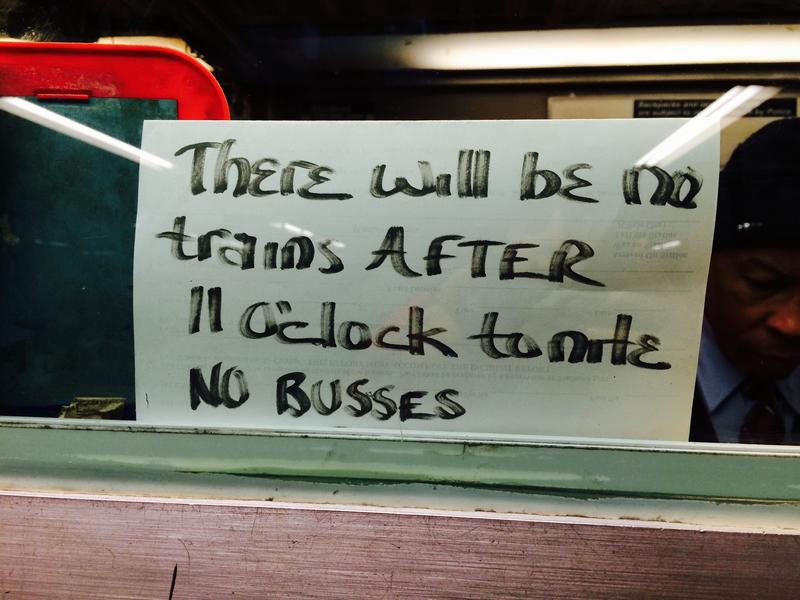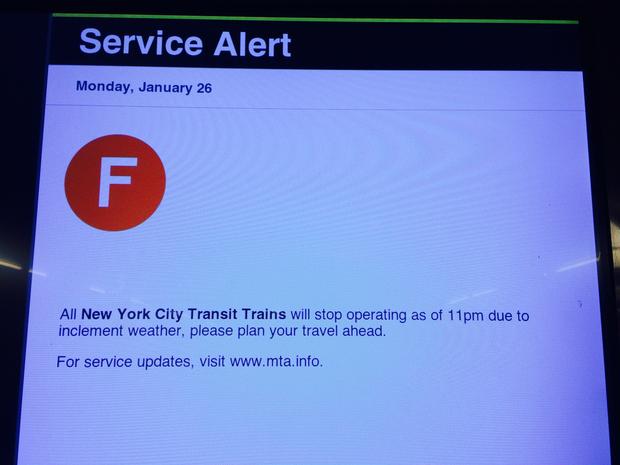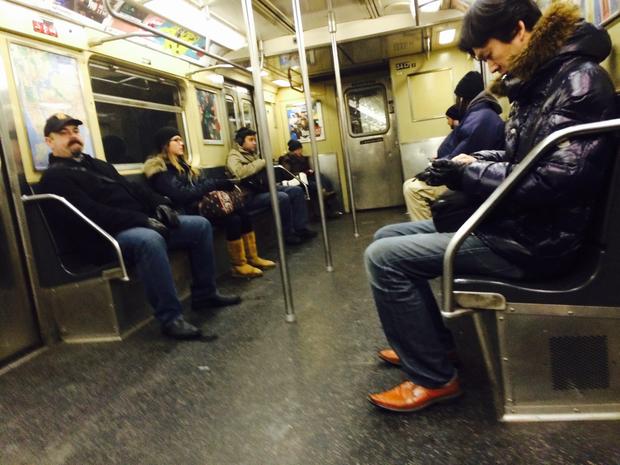 Transportation Nation
Transportation Nation
MTA Had Plan to Keep Subways Running Despite Heavy Snow

The MTA has a winter playbook it turns to when it comes to snowstorms, detailing just how much service it can safely provide. And speaking at a lunchtime press conference on Monday, as what looked like a blizzard bore down on the East Coast, the agency's chief said it was time to put one piece of it into action.
"We're going to put a Plan V in effect," MTA Chairman and CEO Tom Prendergast said, "which occurs when we have a storm of this magnitude."
Plan V is meant to prevent debacles like the December 2010 storm which blanketed the city in 20 inches of snow. During that storm, hundreds of buses were left spinning their wheels on unplowed city streets. Worse still, some 40 subway trains were stuck — including an A train near JFK Airport in Queens, which stranded hundreds of passengers for nearly ten hours without food, water, or heat. Some of them later sued the MTA, and the agency vowed to up its snow game. So it revised and expanded its winter operations plan.
According to that 360-page document, a copy of which was obtained by WNYC, Plan V governs operations during a declared snow emergency. To protect the fleet, subway cars are to be stored on underground express tracks, reducing service. Some lines which duplicate service, like the B or the Z trains, may be suspended. Lines that run outdoors — such as the N or the A lines in Brooklyn and Queens -- may run less frequently. The plan also details specific crew actions, and even talks about where to position diesel trains in the event that a regular subway car gets stuck in the snow.
Plan V indicates how committed the MTA is to keeping subways running in the worst of winter weather. Since 2010, subway service has been occasionally disrupted during snow, but never completely shut down. And the system had never, in its 110-year history, been entirely closed because of snow until New York Governor Andrew Cuomo decided to on Monday.
That has offended some MTA insiders and raised the ire of critics.
"Cuomo doesn’t want to deal with headlines placing the blame for the next stranded subway on his shoulders so instead, the entire city is effectively shut down," wrote Ben Kabak on his blog, Second Avenue Sagas.
When, during that noon news conference on Monday, it looked like the subways might run all night, a reporter asked MTA's Prendergast how confident riders could be that they could catch a subway at midnight?
"On an underground line, confidence level is very high," Prendergast said. Later, when pressed whether the system might close entirely, Prendergast said: "I don't believe so. I don't believe so, because there'd be no reason for us — we'd be able to run trains. And it's an essential part of transportation for people who must get around, including our own employees."
The decision to shut down the system was announced about four hours later, in an almost off-hand manner.
Cuomo kicked off another news conference (at about 4:45 p.m.) by announcing road closures. Then he segued to the rails.
"Getting the subways and the railroad cars in a safe position is key, so when the weather does leave, we're in a position to start back up."
Wait, what? He had earlier announced that Metro-North and the Long Island Rail Road would cease operations at 11p.m. Was he shutting the subways too?
"It is, um, the entire system," the governor responded.
(The announcement was all the more mystifying, given that the weather forecast did not materially change between the two press conferences. We saved the National Weather Service forecasts for comparison.)
On Tuesday morning, Cuomo announced the resumption of subway and bus service. He added the decision to close the system was made to "err on the side of caution."
MTA's Prendergast said it would have been too complicated to keep passenger service running, even on a truncated basis.
"You have to cut a special schedule," he said, "and it's tough to run. And when you're trying to do that as well as clean the right of way, and restore service when you've got a blizzard...that's hard to do both."
Meanwhile, in a separate news conference later that morning, New York City Mayor Bill de Blasio was diplomatic.
"It was right to take extraordinary precautions," he said.
But de Blasio admitted he had not been brought into the process to cancel service. "We found out," he said, "just as it was being announced."
Subways began running again around 9 a.m. Tuesday. The MTA said service will back to normal by the Wednesday morning rush.

